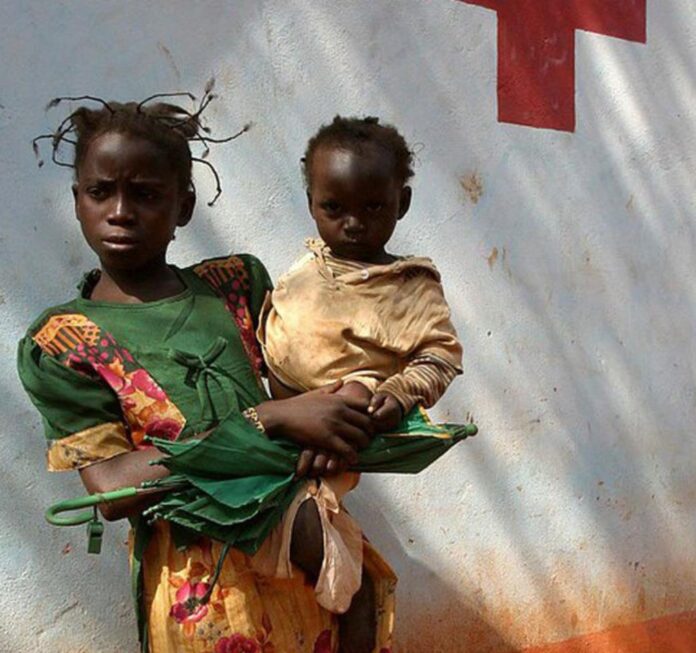How much has climate change affected your life? Probably not that much, but this is not the reality for marginalized communities around the world. Due to the government prioritizing the interest of corporations, some communities disproportionately suffer from the relentless hammering of climate change on a daily basis.
Welcome to The Environmentalist, your column for understanding the natural world. Today we will introduce climate inequality, one of the most daunting challenges of our time.
Climate inequality occurs when the impacts of climate change disproportionately affect vulnerable communities, especially Black, Indigenous, immigrant, and refugee folks. Usually, these groups have limited access to resources, lower incomes, and marginalized social positions, which leads to them being less capable of adopting mitigation and adaptation strategies. This makes them more susceptible to the impact of climate disasters, food insecurity, economic hardship, and related health issues. It’s clear that climate inequality has serious impacts on physical, emotional, psychological, and spiritual well-being.
In Canada, there are numerous examples of environmental racism. One of the best known is Boat Harbour, an estuary turned into a freshwater lake and used as an industrial waste water effluent by the pulp mill at Abercrombie Point and Canso Chemicals between 1967 and 2020. The consequences are undeniable: more than 200 studies done at Boat Harbour have confirmed that the sediments in the lake have contaminants such as cadmium, mercury, petroleum hydrocarbons, and many more. This case also shows how industrialization can work as a tool for colonialism and cultural erasure. The events that surrounded the incident disregarded the livelihoods and land treaties of the Indigenous Mi’kmaq community; the traditional and generational knowledge of the local people was almost eradicated because of corporate greed and their disregard of the environment — just to save the company some “liabilities.” Some other notable cases that I encourage you to learn about are mercury pollution of the river in Ontario’s Grassy Narrows First Nation and toxic waste dumped in the community of Africville in Halifax, Nova Scotia.
It is important to mention that climate inequalities are ruled by systematic neglect caused by the lack of, or non-compliance of, environmental government policies, acts, and decisions that intentionally or unintentionally affect vulnerable communities. This is because our governing bodies care more about protecting the economic interests of corporations than the well-being of citizens and integrity of the environment. Such is the case of Monsanto, an American corporation that, until Bayer bought it, was the leading producer of chemical, agricultural, and biochemical products of worldwide agricultural importance. The company got into a controversial case in which a number of malpractices were revealed, and ended in them pleading guilty to 30 environmental crimes related to the use of pesticides. They constantly bribed government officials around the world, most notoriously the senior environmental official of Indonesia, Nabiel Makarim, to get him to reject a decree that would have been unfavourable for the company.
Climate inequality on a global scale gets more concerning, as with mining in Congo and other countries in Africa. This is a dreadful situation that allows us, in the global north, to have our electric cars and cell phones with rechargeable batteries. This is all because of cobalt, a metal that has allowed for miraculous advances in technology, but that is toxic to the point of devastating landscapes and polluting both water and soil. Additionally, the human rights of the people living around Kolwezi, the centre of Congo’s cobalt industry, are being constantly violated by neglected security, lack of access to clean water and food, reduced access to education, and exposure to toxic chemicals — chemicals that have been proven to affect reproductive health of women, cause various skin diseases, birth-defects, and increase child mortality. In fact, the whole cobalt and copper mining region was defined by the African Resources Watch (AFREWATCH) as a “sacrifice zone” which is an area where people suffer severe health issues and human rights abuses related to living in heavily contaminated areas.
The worst part about climate inequality is that it is not talked about in the media. For example, huge portions of South American forests, including parts of the Amazon rainforest, burned down to a crisp this summer due to the extreme droughts. I’m sure most of us are oblivious about not just this, but many other events happening in the global south, since they aren’t commonly covered by the media.
There are myriad solutions for climate inequality, but only if it is not kept silent and ignored. Listen to the victims; be vigilant about industrial activity around you and how your local government is regulating it. There is only one solution: as The Lorax once said, “Unless someone like you cares a whole awful lot, nothing is going to get better.” So, let’s care.



